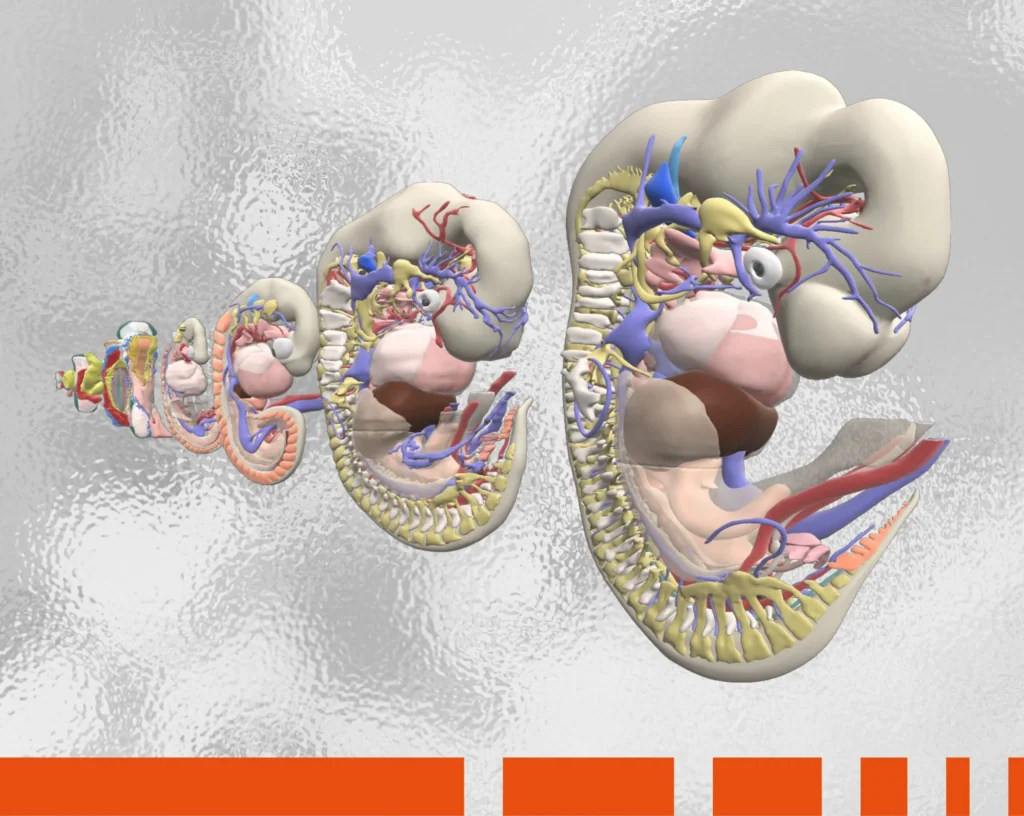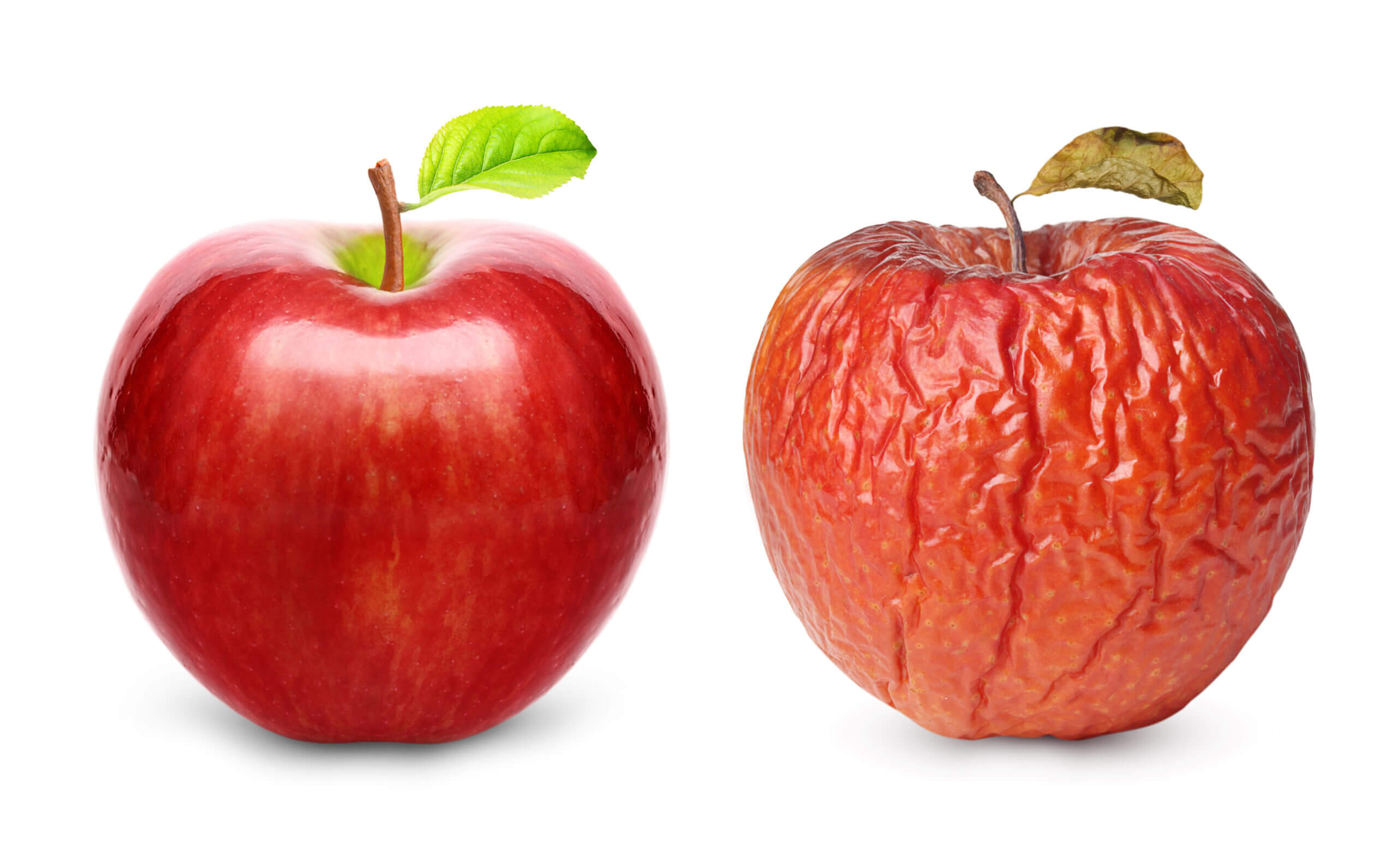Do you have furrow lines or crow’s feet? Do you have laughter lines or deep creases elsewhere on your skin? Then welcome to the wonderful world of wrinkles! Read on as we look through the lens of anatomy at what causes wrinkles, and what we can do to prevent them.
A wrinkle is a natural crease or line formed in healthy skin, resulting from the skin’s loss of firmness and elasticity over time. The most common areas wrinkles form are on sun-exposed skin like the face, neck, hands and forearms. However much you want to roll back time, the aging of our skin starts as soon as we are born – or even earlier! Even newborn babies can have wrinkles, as their joints have been continually flexing and contracting in the womb.
Your skin
To find out why wrinkles happen we must first understand the inner workings of our skin. As it is the largest organ in our body, our skin acts as a very effective chemical, biological, and physical barrier to the outside world. It is composed of three layers:
- Epidermis
- Dermis
- Hypodermis (subcutaneous tissue)
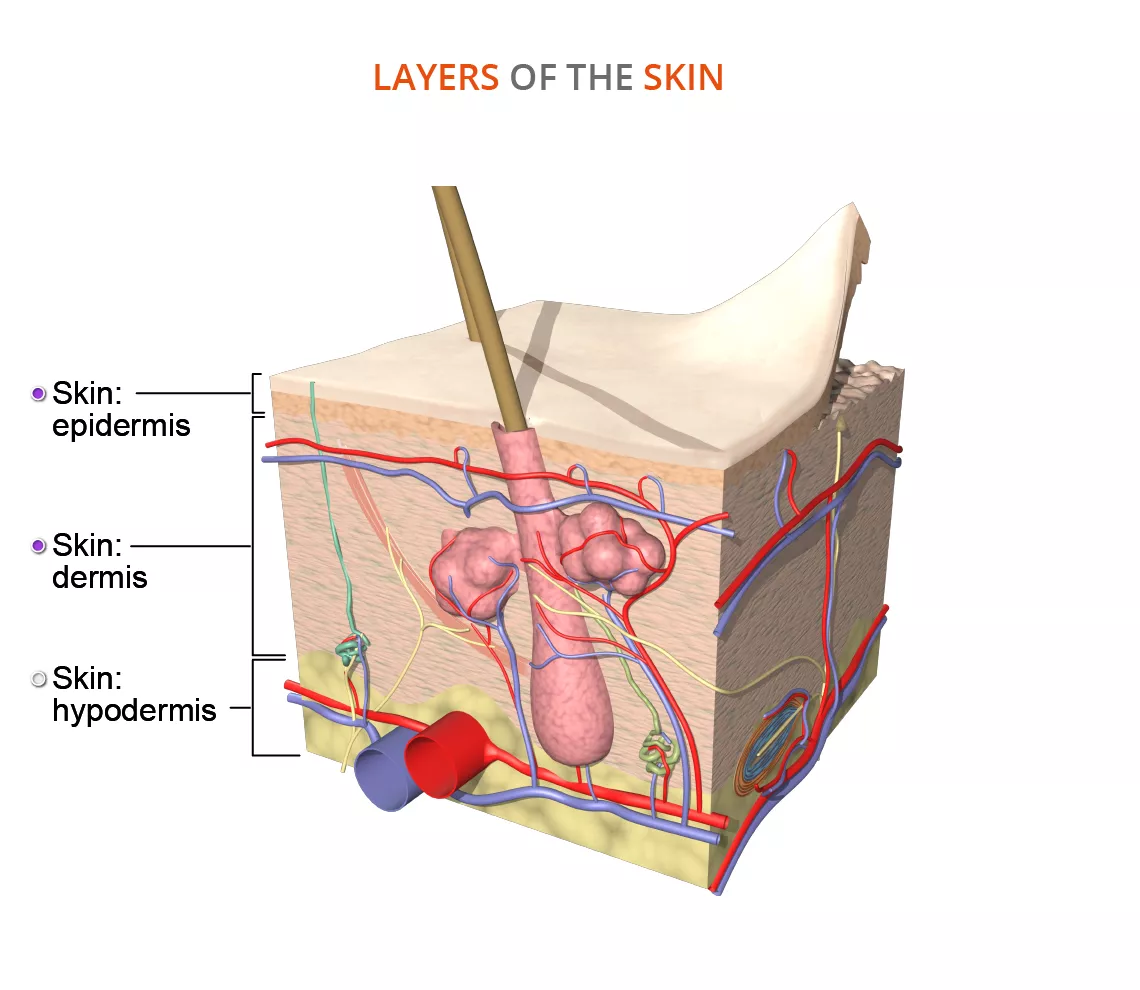
These layers are part of the integumentary system which includes nails, hair and sweat glands.
The epidermis is the tough outer layer that forms a water barrier between our body and the environment. New skin cells are made regularly, traveling up from the bottom part of the epidermis to the top, eventually shedding into flakes of dust.
The dermis is the thick inner layer and is more complex than the epidermis. It holds collagen and elastic fibers, which helps skin keep its shape and elasticity. But when stretched, like during pregnancy, it can tear and result in permanent stretch marks. The dermis also contains sebaceous glands (oil glands), which secrete sebum (oil) and keep your skin soft, smooth and protected against infections. However, you can get acne if your body makes too much.
The epidermis and dermis rest on the hypodermis, also known as the subcutaneous layer. It is composed of connective tissue that contains fat, blood vessels and nerves. It functions as a protective cushion and insulator, thereby regulating your body temperature.
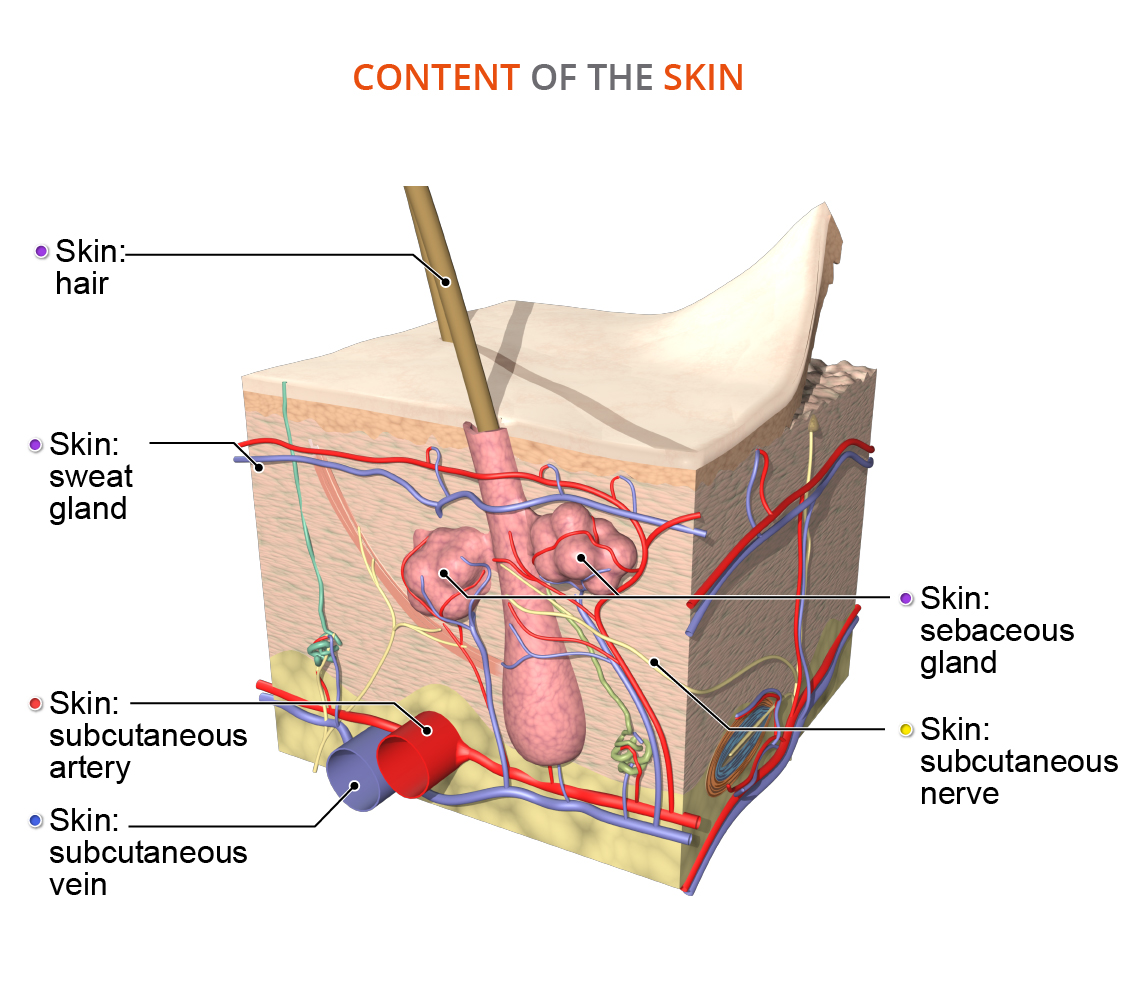
What factors cause wrinkles?
Although you might think wrinkles are just inherited, there are two additional contributors to the changes within our skin as we age.
Intrinsic aging is part of our natural aging process:
- After age 20 our bodies produce 1% less collagen each year, so our skin becomes thicker and looser. When it is stretched back and forth repeatedly it eventually turns into wrinkles.
- In our 30s our fat cells start to shrink, which eventually causes the skin to become thin and brittle. This results in a reduction in sebum production, which is why we see wrinkles around our eyes first as this area has no sebaceous glands.
- After the age of 40 collagen production stops altogether, and it becomes difficult for the cells to regenerate.
- Finally, after 50, we lose the fat stored in the subcutaneous layer, and there is a decline in blood vessels and circulation. This results in a reduced supply of nutrition and causes our skin to become thinner.
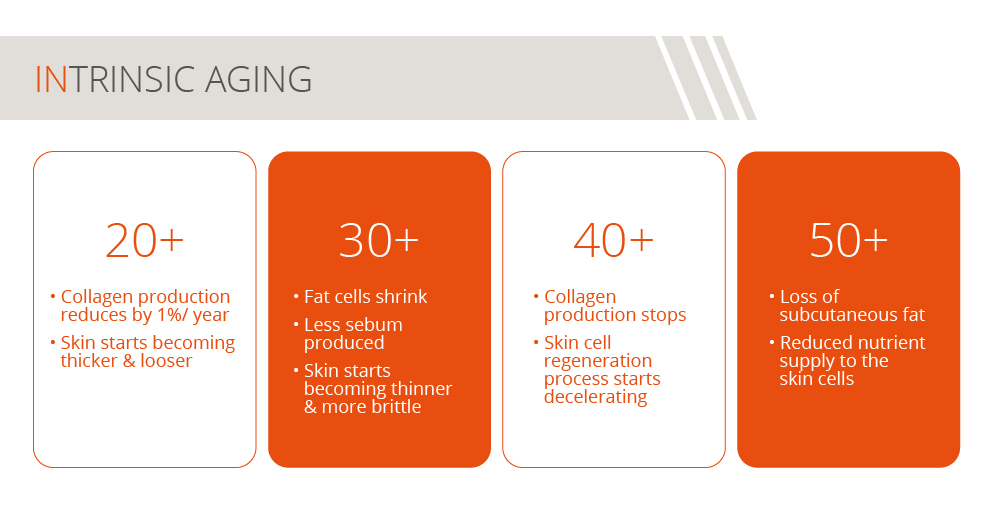
Extrinsic aging relates to exterior environmental factors:
- Repeated facial expressions – whether happy or sad – eventually lead to creases in our skin, appearing in the opposite direction to how our facial muscles contract.
- Smoking (the repeated action of sucking on a cigarette) has the same effect as repeated facial expressions. The nicotine found in cigarettes also narrows the blood cells in the epidermis, depriving the skin of oxygen and nutrients, which can result in sagging skin and wrinkles.
- Free radicals in polluted air alter the chemical construction of our skin, speeding up the aging process so wrinkles appear earlier.
- Although your body tries to protect itself from the sun’s UV radiation by producing melanin, too much exposure can cause the breakdown of collagen and elastin in the dermis. This can lead to sagging skin, wrinkles, sunspots, rough texture, pigmentation and even some types of cancer.

As you can see, both these processes are over a long period of time, but it does explain how factors apart from genes can contribute to our wrinkles.
Possible ways to reduce your wrinkles
Even though aging is inevitable there are ways you can help reduce, prevent or even reverse wrinkle formation. Although contrary to popular belief, drinking lots of water is not one of them!
Non-surgical treatments:
- Wear sunscreen all year round, limit the time you spend in the sun on hot days or during the hottest part of the day and wear long sleeves and pants. Applying SPF 30 sunscreen or higher every few hours, especially after swimming, protects your skin from the sun’s harmful rays.
- Moisturize your skin regularly to help it to retain water, look plumper and hide the lines and creases. Choose a product that has both UVA and UVB protection.
- Sleep in different positions to help reduce the deep creases that appear on our noses.
- Even if you have smoked for years, quitting will give your skin a fighting chance to smooth out face wrinkles and become healthier.
- Eat a healthy diet rich in vitamins C and E to help balance out the texture of your skin.
If you have tried the above treatments and preventative measures but don’t feel they have helped, then surgical treatments may be more effective in reducing your wrinkles.
Surgical treatments:
- Dermabrasion improves the smoothness of your skin by scraping away the top layers.
- A chemical peel is a chemical solution used to dissolve the top layer of skin revealing the new smooth skin underneath.
- Laser skin resurfacing directs pulsating beams of light at irregular skin to remove skin layer-by-layer very precisely. It promotes the growth of new collagen fibers, making the new skin firmer and smoother. This treatment is good for fine lines and wrinkles under the eyes, forehead and mouth, but is not recommended for deep wrinkles or excessive sagging skin. Exposure to the sun should be avoided for three months after treatment.
- Botox® (botulinum toxin) injections are neurotoxins that stop the muscles in your skin from contracting and forming fine lines and wrinkles. It is only temporary, so the procedure needs to be repeated every three to four months. If you choose not to repeat the procedure your wrinkles will come back. Side effects include temporary bruising, stinging or redness around the injection site.
- Fillers can be used when the skin is creased, even when your face is resting. It’s a natural sugar polymer already in your body called hyaluronic acid that fills in or lifts areas of the skin which are depressed. Again, this is only a temporary solution and needs repeated every 4-6 months. Side effects include bruising, temporary swelling, and pain.
- A facelift is a surgical procedure where excess skin on the face and neck is removed completely and the muscles and connective tissue are tightened. This usually lasts 7-10 years.
If you are debating what to do about your wrinkles, you could always remember that those fine lines and creases on your skin are visual memories of all the experiences you have lived through! Embracing this change that comes with age will let your confident self shine through, overshadowing any wrinkles.
The images used in this piece have been taken from Primal’s Anatomy & Physiology module. To learn more, please fill in the form here and our team will be in touch.
